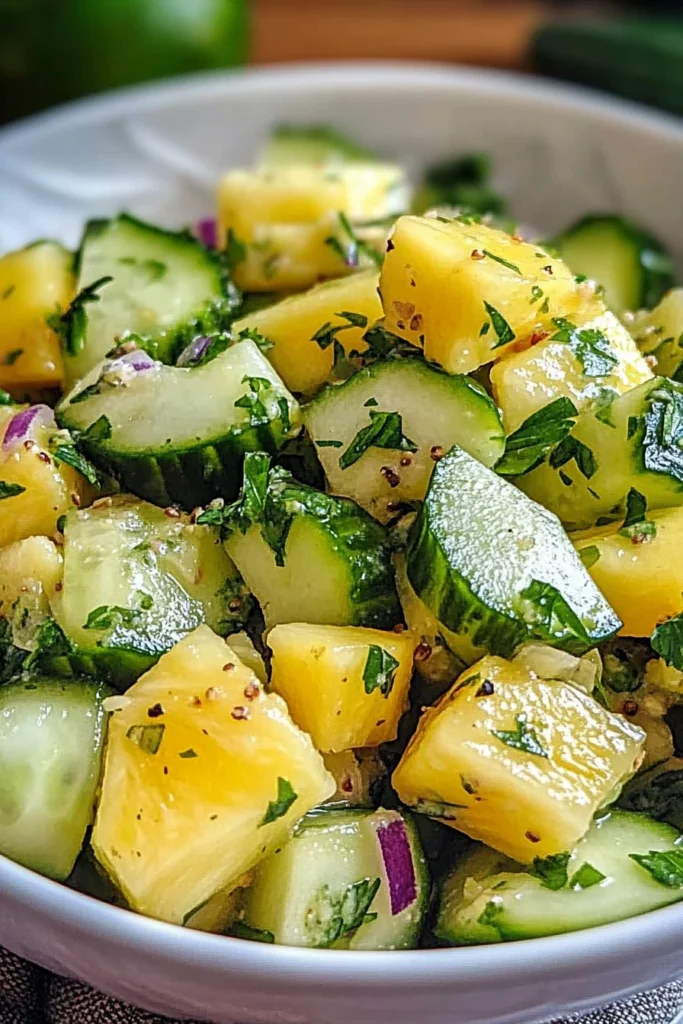Butternut squash soup is the epitome of cozy comfort food — smooth, creamy, and full of natural sweetness. It’s a dish that captures the essence of autumn, with its golden color, velvety texture, and warm, earthy flavor. Whether served as a starter for a festive dinner or as a nourishing meal on a chilly evening, this soup brings warmth and satisfaction to every bowl.
This recipe celebrates the natural richness of butternut squash, enhanced by aromatic herbs, a hint of garlic, and a touch of cream. The result is a perfectly balanced soup that’s both wholesome and indulgent. It’s simple to prepare, yet elegant enough to impress guests.
The Essence of Butternut Squash Soup
The essence of this soup lies in its balance of sweetness and savoriness. The butternut squash provides a naturally sweet, nutty flavor, while the onions, garlic, and herbs add depth and complexity. The cream or coconut milk gives it a luxurious texture, making each spoonful smooth and satisfying.
It’s a dish that feels both rustic and refined — a perfect example of how simple ingredients can create extraordinary flavor.
Why This Recipe Works
This recipe works because it builds flavor through roasting and layering. Roasting the squash intensifies its sweetness and adds a subtle caramelized note. The onions and garlic create a savory base, while the broth and cream tie everything together. The result is a soup that’s rich, flavorful, and perfectly balanced.
The key is patience — allowing the squash to roast until tender and golden ensures a depth of flavor that can’t be achieved by boiling alone.
Ingredients and Their Roles
Butternut squash: The star of the dish, providing sweetness, creaminess, and color.
Onion and garlic: Build the aromatic base.
Olive oil or butter: Adds richness and helps caramelize the vegetables.
Vegetable or chicken broth: Forms the liquid base and enhances flavor.
Cream or coconut milk: Adds smoothness and richness.
Thyme or sage: Infuses the soup with earthy, aromatic notes.
Salt and pepper: Essential for seasoning.
Nutmeg (optional): Adds warmth and depth.
Step-by-Step Recipe
Ingredients
- 1 large butternut squash (about 3 lbs), peeled, seeded, and cubed
- 2 tablespoons olive oil or butter
- 1 medium onion, chopped
- 2 garlic cloves, minced
- 4 cups vegetable or chicken broth
- 1 cup heavy cream or coconut milk
- 1 teaspoon salt
- ½ teaspoon black pepper
- ½ teaspoon dried thyme or 1 teaspoon fresh thyme
- ¼ teaspoon nutmeg (optional)
- Fresh parsley or pumpkin seeds for garnish
Preparation
- Roast the squash. Preheat the oven to 400°F (200°C). Toss the cubed squash with 1 tablespoon of olive oil, salt, and pepper. Spread on a baking sheet and roast for 25–30 minutes until tender and lightly caramelized.
- Sauté the aromatics. In a large pot, heat the remaining olive oil or butter over medium heat. Add the onion and cook for 5–7 minutes until soft and translucent. Add the garlic and thyme, cooking for 1 minute more.
- Add the squash and broth. Transfer the roasted squash to the pot. Pour in the broth and bring to a simmer. Cook for 10–15 minutes to allow the flavors to meld.
- Blend the soup. Remove from heat and let cool slightly. Use an immersion blender to puree the soup until smooth, or transfer to a blender in batches.
- Add the cream. Return the soup to the pot and stir in the cream or coconut milk. Heat gently, but do not boil. Add nutmeg if desired.
- Season and serve. Taste and adjust seasoning with salt and pepper. Serve hot, garnished with parsley, pumpkin seeds, or a drizzle of cream.
Tips for Perfect Butternut Squash Soup
- Roast the squash for deeper flavor.
- Use fresh herbs for a more aromatic result.
- Blend thoroughly for a silky texture.
- Add cream at the end to prevent curdling.
- Garnish with roasted seeds or croutons for texture.
Variations and Flavor Combinations
1. Classic Butternut Squash Soup
Traditional version with cream, thyme, and nutmeg.
2. Spicy Butternut Squash Soup
Add a pinch of cayenne pepper or red chili flakes for heat.
3. Butternut Squash and Apple Soup
Add a chopped apple for a sweet-tart twist.
4. Butternut Squash and Carrot Soup
Combine with carrots for extra sweetness and color.
5. Vegan Butternut Squash Soup
Use coconut milk instead of cream and vegetable broth.
6. Curried Butternut Squash Soup
Add curry powder or turmeric for a warm, exotic flavor.
Serving Suggestions
Butternut squash soup pairs beautifully with:
- Crusty bread or garlic toast.
- A fresh green salad.
- Grilled cheese or turkey sandwiches.
- Roasted vegetables or quinoa salad.
- A glass of white wine or apple cider.
Make-Ahead and Storage
Make-ahead: The soup can be made up to two days in advance. Reheat gently before serving.
Storage: Store leftovers in an airtight container in the refrigerator for up to 4 days.
Reheating: Reheat slowly over low heat, stirring occasionally. Avoid boiling to prevent separation.
Freezing: Freeze in portions for up to 3 months. Thaw overnight before reheating.
Nutritional Information (per serving)**
- Calories: 280 kcal
- Protein: 5 g
- Fat: 18 g
- Carbohydrates: 25 g
- Sugar: 8 g
The History of Butternut Squash Soup
Butternut squash soup has its roots in North American cuisine, where squash has been cultivated for thousands of years. Indigenous peoples valued squash for its versatility and nutrition, using it in soups, stews, and baked dishes. The modern creamy version became popular in the 20th century as chefs began blending roasted squash with cream and herbs to create a smooth, elegant soup.
Today, it’s a staple of fall and winter menus, celebrated for its comforting flavor and vibrant color.
Texture and Flavor Profile
The perfect butternut squash soup is smooth, creamy, and slightly sweet. The roasted squash gives it a caramelized depth, while the cream adds richness. The herbs and spices balance the sweetness with savory notes, creating a harmonious flavor profile.
Each spoonful delivers warmth, comfort, and a hint of natural sweetness that makes this soup irresistible.
Common Mistakes and How to Avoid Them
Skipping the roasting step: Results in a bland soup. Roast for depth.
Adding too much liquid: Makes the soup thin. Add gradually.
Over-blending: Can make the texture gummy. Blend just until smooth.
Boiling after adding cream: Causes curdling. Heat gently.
Under-seasoning: Taste and adjust salt and pepper before serving.
Chef’s Tips
- Add a splash of maple syrup for a hint of sweetness.
- Stir in a spoonful of butter before serving for extra richness.
- Garnish with crispy sage leaves for a gourmet touch.
- Use homemade broth for the best flavor.
- Add a swirl of yogurt or crème fraîche for presentation.
Pairing Ideas
With Drinks:
- White wine like Chardonnay or Pinot Grigio.
- Sparkling cider or ginger ale.
- Herbal tea or hot apple cider.
With Other Dishes:
- Pair with roasted chicken or salmon.
- Serve alongside a cheese platter or charcuterie board.
- Add a side of roasted potatoes or a light salad.
The Joy of Comfort Cooking
Butternut squash soup embodies the joy of comfort cooking — simple, wholesome, and full of love. It’s a dish that brings warmth to the table and comfort to the soul. The aroma of roasted squash and simmering herbs fills the kitchen with a sense of calm and nostalgia.
It’s proof that the best meals are often the simplest, made with care and fresh ingredients.
The Science of Creamy Soup
The secret to a creamy soup lies in the balance between starch and fat. The butternut squash provides natural starch that thickens the soup, while the cream or coconut milk adds richness. Blending emulsifies the ingredients, creating a smooth, velvety texture.
The result is a soup that’s thick, luscious, and perfectly cohesive.
Presentation and Finishing Touches
For an elegant presentation, ladle the soup into bowls and drizzle with cream or olive oil. Garnish with pumpkin seeds, chopped herbs, or a sprinkle of paprika.
For a restaurant-style touch, serve with a swirl of crème fraîche or a few roasted squash cubes on top.
Modern Variations
- Keto Butternut Squash Soup: Use heavy cream and skip the sugar.
- Low-Fat Version: Use milk instead of cream and less oil.
- Vegan Alternative: Use coconut milk and vegetable broth.
- Spicy Butternut Squash Soup: Add chili flakes or cayenne pepper.
- Butternut Squash and Sweet Potato Soup: Combine for extra sweetness and color.
The Perfect Comfort Meal
Butternut squash soup is the perfect comfort meal for any occasion. It’s elegant enough for entertaining yet simple enough for everyday cooking. Whether served as a starter or a main course, it brings warmth and satisfaction to every table.
It’s a dish that proves that comfort food can be both wholesome and sophisticated — a timeless classic that never fails to please.
The Cultural Influence of Butternut Squash Soup
Butternut squash soup reflects the fusion of traditional and modern cooking. It combines the rustic simplicity of roasted vegetables with the refinement of creamy soups. Its popularity continues to grow as more people embrace seasonal, plant-based, and homemade meals that are both nourishing and flavorful.
The Role of Butternut Squash
Butternut squash is the heart of this soup. Its natural sweetness, smooth texture, and vibrant color make it ideal for blending into a creamy, comforting dish. It’s rich in vitamins A and C, fiber, and antioxidants, making this soup as nutritious as it is delicious.
The Perfect Spoonful
The perfect spoonful of butternut squash soup combines the sweetness of roasted squash, the richness of cream, and the aroma of herbs. It’s smooth, warm, and deeply satisfying — a bite that captures the essence of comfort and elegance.
Conclusion
Butternut squash soup is a celebration of flavor, texture, and simplicity. With its roasted squash, aromatic herbs, and creamy finish, it’s a dish that feels both luxurious and familiar.
Easy to prepare yet impressive to serve, it’s perfect for any occasion. This recipe proves that with fresh ingredients and a touch of care, you can create a meal that’s both comforting and unforgettable — a true masterpiece of homemade comfort cuisine.







